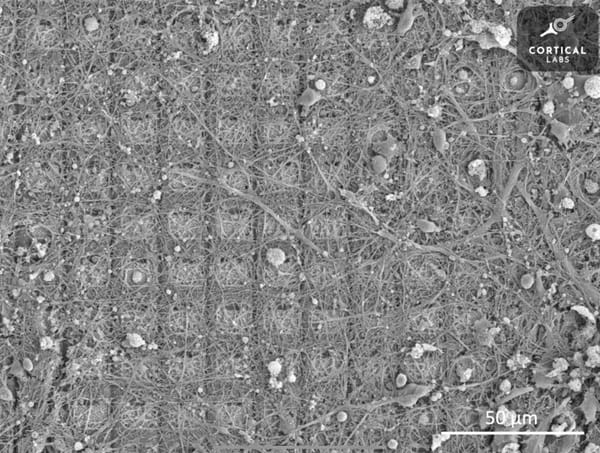A Revolution in Neuroprosthetics: Restoring Touch with a Brain-Controlled Bionic Hand
Discover how a group of researchers in Sweden are pioneering the world's first bionic limb that can sense touch
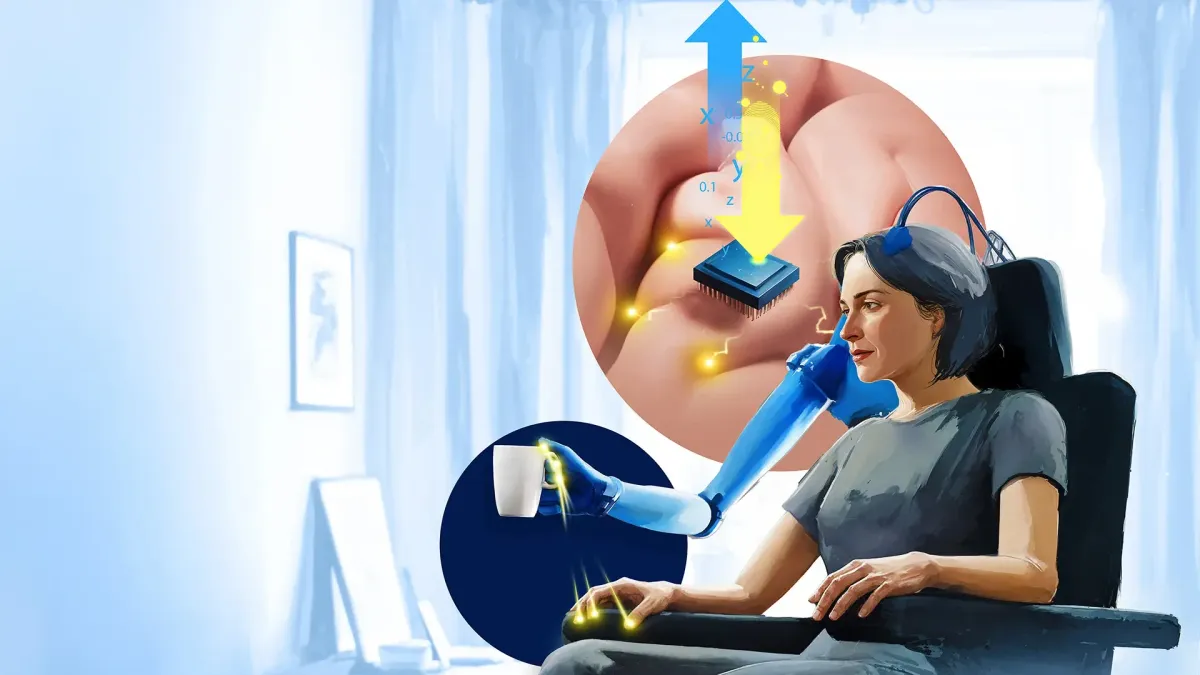
Most often take for granted how lucky they are to have complete control over all their biological limbs and to have them all functioning properly. Unfortunately, this is not the case for many of people who have suffered spinal chord injuries (SCIs) and have therefore been paralysed, decreasing their quality of life by many magnitudes. In this article I’ll be discussing a new advancement in prosthetics that has just recently emerged, which may soon change the lives of millions around the world dealing with SCIs and paralysis.
For decades, research into bionics, and specifically brain activity, have aimed to restore this lost function of limbs to those people, looking constantly at how to increase a person’s wellbeing and enjoyment of life. A bionic hand can restore one’s movement and manipulation to a certain degree, but, put simply, prostheses are inferior to their biological counterparts in almost every way – and one of the main reasons for this is they lack a sense of touch. Even bionic limbs with the most cutting-edge robotics inside them will still feel unnatural and hard to control without any form of sensory feedback – something that may have the biggest impact on an amputee’s quality of life, and something that we all take for granted.
That may all soon change, however, as researchers at the Chalmers University of Technology in Gothenburg, Sweden have developed a brain-controlled bionic arm capable of delivering artificial touch.
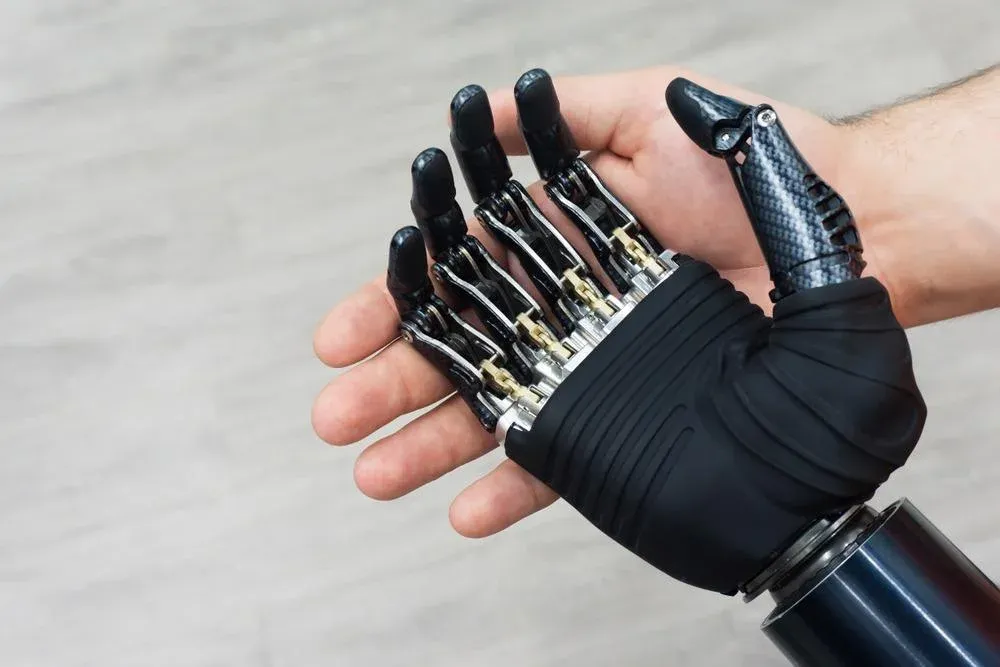
How traditional bionics work
(and a shallow dive into how SCIs affect them)
Up to this point, the most technologically advanced prostheses for those with SCIs have used something called surface electromyography (sEMG) sensors to control the operation of the bionic hand, which have only been designed for amputees and those with partial SCIs and peripheral nerve injuries, where the spinal chord is not fully damaged and muscles retain some movement depending on the which nerves have been damaged. sEMG involves the placement of small electrodes on the skin over residual muscles at the site of the amputation or partial paralysis. Now matter how weak, these residual muscles will still generate an electrical signal when the user initiates an intent to move the missing or non-functional limb. These tiny electrical signals from the contractions are then picked up by the electrodes, which convert the impulse into a voltage signal. Advanced computing built into the prostheses will then interpret the contractions of the residual muscles and from that, determine which muscles would’ve been moved in the real hand, and finally it is translated into a movement of the bionic hand. It’s designed to feel as natural as possible, however, current limitations in sensory feedback mean users must rely on visual and learned cues to fine-tune their movements of the hand.
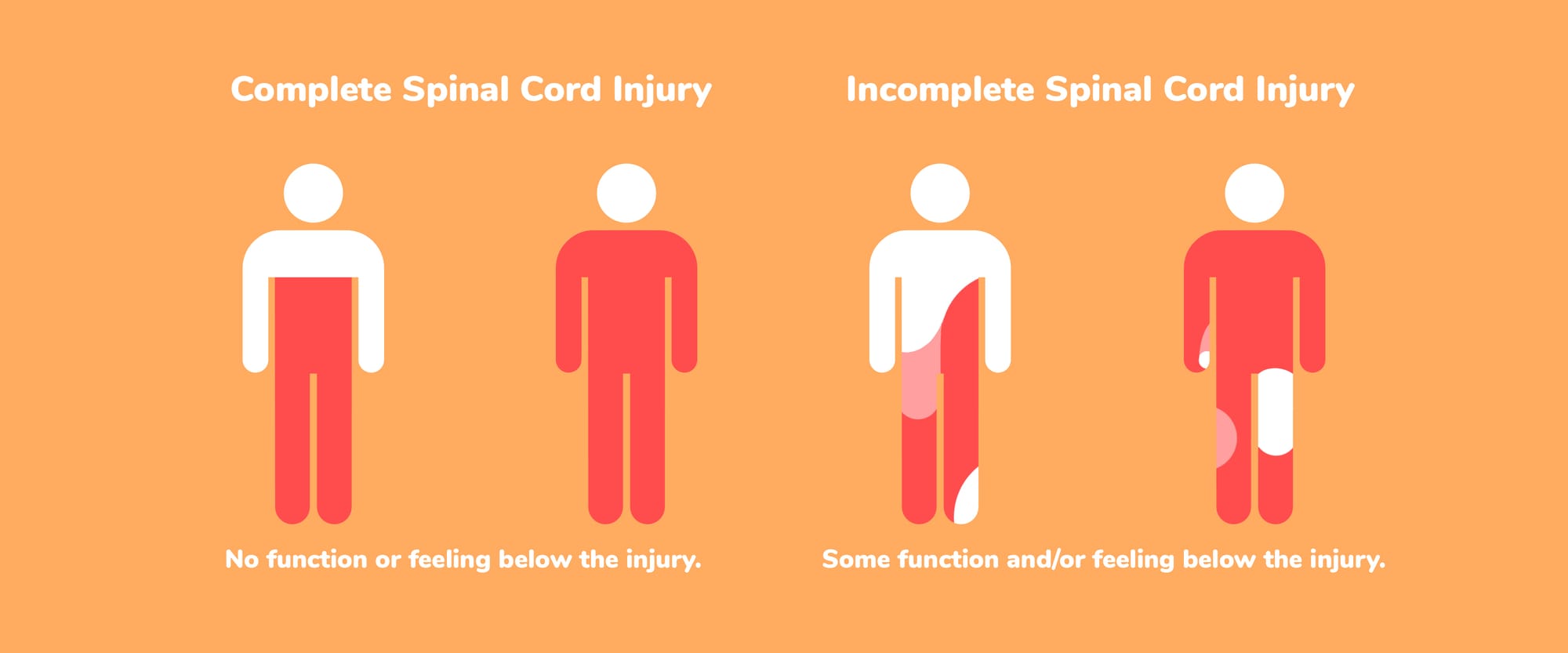
But, you may ask, what about those with a complete spinal chord injury who have total loss of muscle function and thus have been rendered unable to use traditional sEMG bionics?
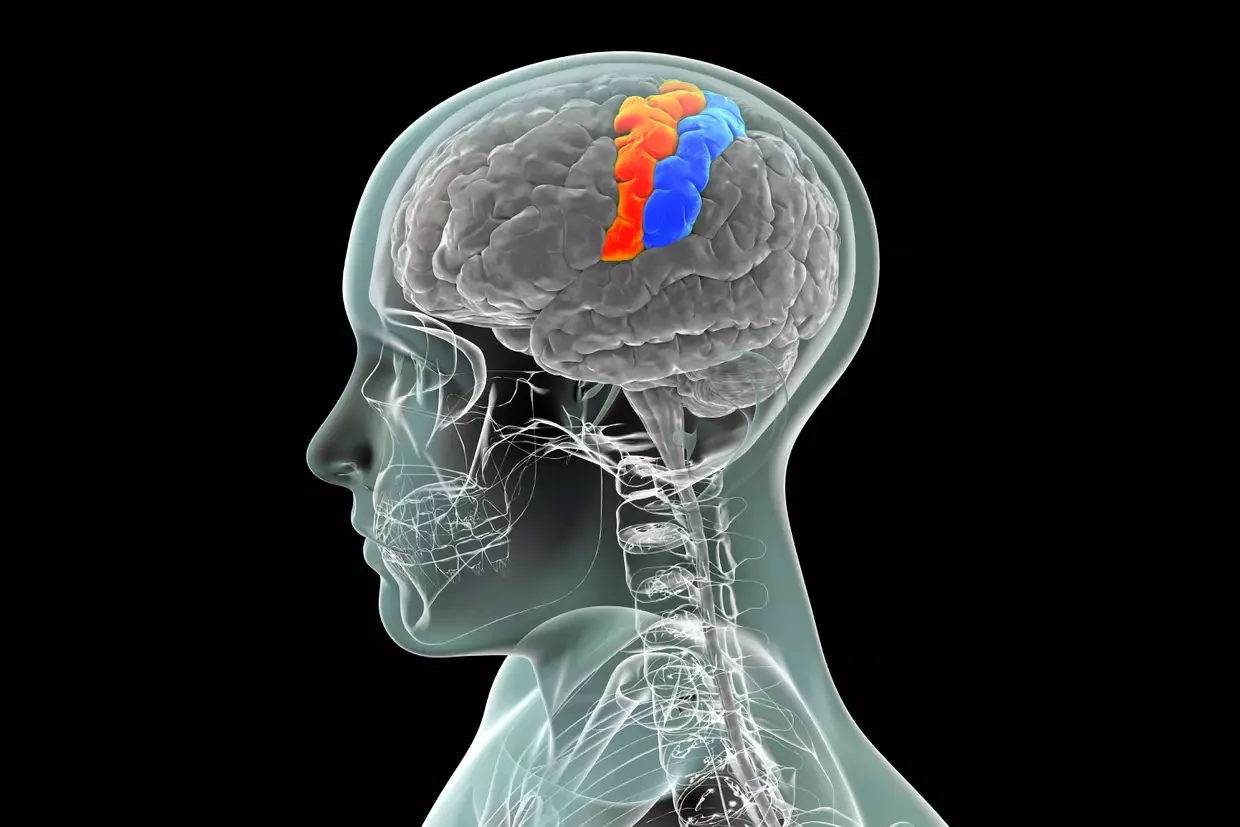
The touch-sensing, brain-controlled, cutting- edge bionic arm
(Image to the right depicts the somatosensory cortex of the human brain.)
Enter this new brain-controlled bionic hand, which just may revolutionise the lives of those with spinal chord injuries. It not only offers an external bionic hand that is completely controlled by the brain rather than muscular signals, but it also offers a level of control and dexterity previously unattainable due to creating an artificial sense of touch, allowing users to feel tactile shapes, corners, curves and movements.
Let me explain. Even though motor signals can no longer be detected in someone that has complete paralysis, electrical signals are still able to be detected in the brain associated with the intention to move the hand. Over the course of many years, the researchers collected data using an MRI scanner from two participants that had complete SCIs, recording different patterns of electrical activity and where they were happening inside the brain during the intent to move a muscle. The touch sensations were then achieved by electrodes inside the brain. They were implanted into the areas of a participant’s brain that were detected by the MRI as displaying activity when he would imagine moving his hands and fingers. These electrodes were then programmed to produce precise microstimulation patterns – called intracortical microstimulation, or ICMS for short – in the somatosensory cortex (the part of the brain that controls touch) in response to activity detected in those particular areas of the brain. Different signals would be produced depending on what the user was holding, and thus the electrodes would stimulate the somatosensory cortex with different impulses, mimicking the sense of touch feedback one would get from holding different objects and materials. This not only gives the user the feeling of pressure on their fingertips when they are holding , but actually enable them to distinguish feelings from different objects, as well as mimic how something brushing across their fingers would feel.
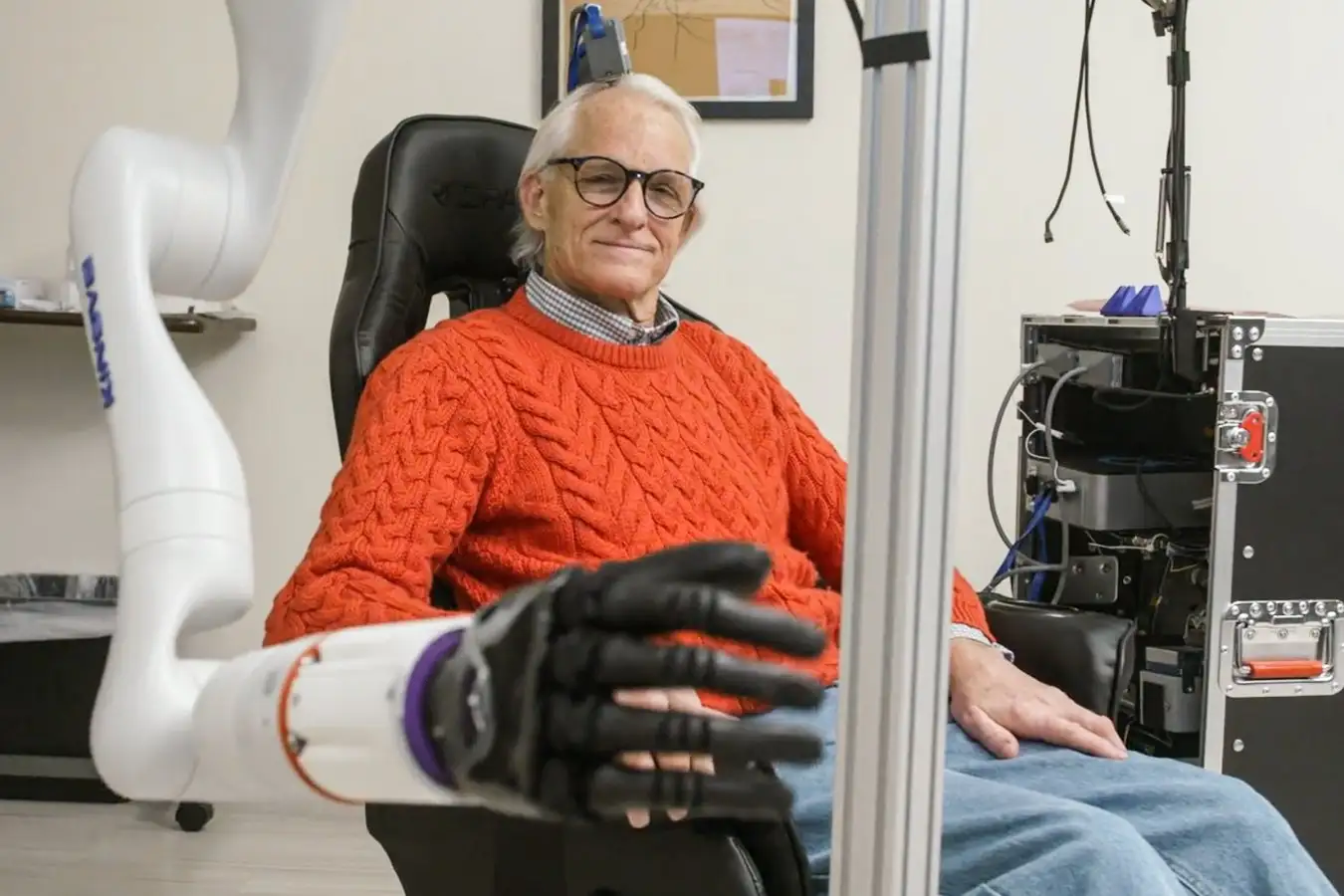
The arm of one of the participants was positioned to hold on to a steering wheel and the participant was asked to watch a video of a car driving straight. The steering wheel would then occasionally make small movements and veer the imaginary car off course. By using the bionic arm to counteract the movements of the steering wheel, the researchers deduced that, from the adjustments that he made to the steering wheel with the bionic arm, he would've remarkably been able to keep the car on course roughly 80% of the time.
Of course, don’t expect this to replace healthy limbs in anytime soon – we’re not quite in a Cyberpunk world just yet. The idea is that the arm would be attached to the wheelchair that the user is sitting in, and the electronics would be integrated into the wheelchair itself, which would then enable them to control the arm from the wheelchair. The setup of this also hopes increases responsiveness of the bionic. Due to the electrodes being connected directly to the brain itself, and the greatly advanced machinery that the form factor of a wheelchair allows for compared to the limited space of a standard bionic hand, the accuracy of the signal as well the time the signal takes from intent in the brain to action in the arm is hoped to be quicker and may allow for more precise control over the arm. While this approach is, of course, currently only designed for those in a wheelchair, future iterations of the arm may allow it to be more compact and potentially serve as an improvement over the traditional sEMG bionics designed for amputees – though, integrating the neural interface into a standalone prosthetic arm remains a challenge for upcoming development.
So far, this technology has only been tested on two people, and is not quite at the stage where it can be rolled out to the masses. Even when it does make it out to the public, it will absolutely not be cheap. However, in the future it may be that, because of this development, more and more people with SCIs will be able to independently perform daily tasks like any other person would.
Thus, patients with a life-changing spinal cord injury may soon just be able to pick up and actually feel an object once again - a feat that has never been thought possible before now; a feat that would transform the lives of many of the 15 million people that the WHO claims currently live with SCIs in the world.
